Welcome to How’d They Do That? — a bi-monthly column that unpacks moments of movie magic and celebrates the technical wizards who pulled them off. This entry explains how they shot the locust swarm scene in Terrence Malick‘s Days of Heaven.
Terrence Malick and cinematographer Néstor Almendros wanted Days of Heaven to feel like a silent film. The edit, which took two years to complete, largely did away with dialogue. And to imbue the Texas panhandle with the scale of a silent blockbuster, Malick and Almendros deliberately shot the film almost entirely with natural light.
The effect is a pastoral period piece with the weight and gravity of a biblical epic. It’s impressionistic and poetic in that inscrutably Malickian way, where every intercut b-unit closeup feels as thunderous and meaningful as any crane-shot or panorama. There is an enormity about Days of Heaven, an engulfing sense that something larger and more cataclysmic is at work. That all the personal melodrama is but a small part of a grander, and perhaps indifferent, organism.
If Days of Heaven has a fulcrum point, it’s the locust scene. There is hardly any dialogue, only the shouts of frantic farmhands and the deafening, unending rush of furious wings and tiny, insatiable mouths. It is as if the deceitful love triangle at the film’s center—between a migrant steelworker (Richard Gere), his girlfriend (Brooke Adams), and their stoic boss (Sam Shepherd)—has summoned a plague. A living infection that can only be cleansed through hellfire and scorched earth.
Once the infestation is discovered, it’s already too late. Hands clutch desperately at blades of wheat in a vain attempt to contain the swarm one-by-one. The ground teams with insects. The howl of the cranking siren gives way to Ennio Morricone‘s desperate, pleading score.
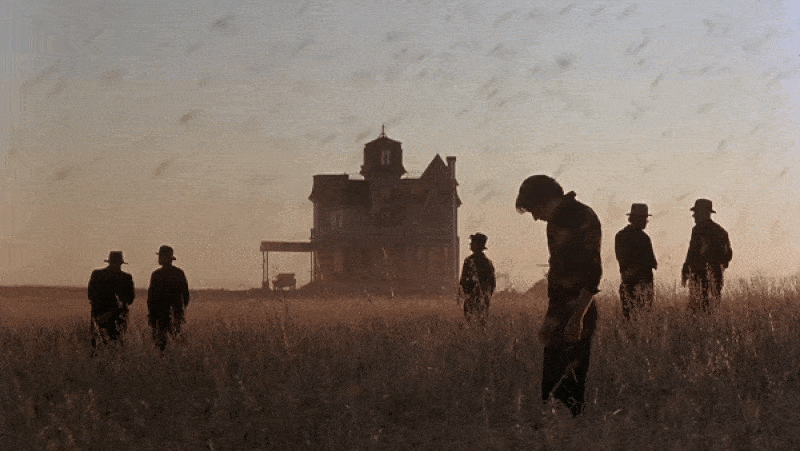
Finally the sequence crescendos into what might just be the most stunning shot in Malick’s career. The farmhands stand still and the locusts rise from the plains in billowing clouds towards the sky. It is as if they have given up, or perhaps made their peace, with this uncontrollable force of nature. The lonely belvedere mansion descends into an orange haze of insects. And Gere slowly tilts his head towards the sky.
It is a powerful and unbelievable shot. And once you’ve caught your breath, you have to wonder: how the heck did Malick do it? Swarms of locusts aren’t exactly trainable. And if Malick built a mansion in the prairies and insisted on natural light, would he use an optical effect?
How’d they do that?
Long story short:
They dropped peanut shells from a helicopter and shot everything in reverse.
Long story long:
Much like the diegetic arrival of the locusts, the production schedule of Days of Heaven was primarily motivated by wheat. While the film narratively takes place in Texas, exteriors were shot in the Canadian province of Alberta, primarily in the ghost town of Whiskey Gap. Unlike American wheat, which at the time was hybridized and thus shorter, the Canadian wheat in Whiskey Gap was four feet tall. Due to delays, the production only had six weeks to take advantage of this tall wheat before the Hutterites (who owned the land) needed to harvest it.
Indeed, Days of Heaven was plagued (haha) with a host of production issues, many of which had to do with Malick moving at a Malickian pace. However, thankfully, Paramount had their hands full with a bigger fire (namely: William Friedkin’s Sorcerer, arguably one of the most troubled productions of all time).
When it came to the wide shots in the locust sequence, where clouds of grasshoppers rise off the plains, “Normally it’d have been done in visual effects,” explains camera operator John Bailey. But, as he tells it, Almendros and Malick were convinced the effect could be achieved in-camera without the use of opticals.
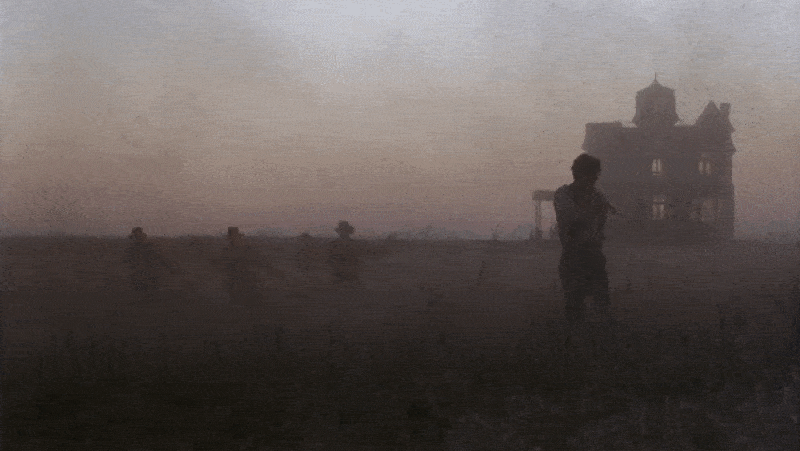
The billowing clouds of ascending insects were in fact peanut shells that had been painted black. The shells were then dropped from bags that were strung up in a helicopter. Or: multiple helicopters (or even planes) depending on who’s telling the story.
To simulate locusts flying upward, the camera crew reverse-loaded the film into the camera. “I remember we had the Panaflex with a reverse running magazine” recalls Bailey. “It was backloaded on the take-up side.”
The actors were instructed to reverse their motions. “I remember that we rehearsed it very carefully,” explains Bailey. When the film was developed the action moved backward but gave the appearance of moving forwards. So: in real life, the shells came down and the actors moved in reverse. And in the print, the shells went up and the actors moved forward.
In the first wide shot, five men in the background face away from the camera and hardly move. Meanwhile, in the foreground, Gere’s Bill slowly tilts his head up. In short, when it comes to the first shot, there’s little to give away the effect.
In the second wide-shot, the falling shells obscure much more of the frame and the actors’ movements are far bolder: they flail their hands, they walk, and Shepherd whips his head in a desperate attempt to defend himself from the onslaught of peanuts. And if you pay close attention to his hair (GIF’d above), you can tell that the action is reversed. It’s one of those details that, once you notice it, gives away the illusion. The oddly gravity-defying movement of Shepherd’s hair gives up the trick.
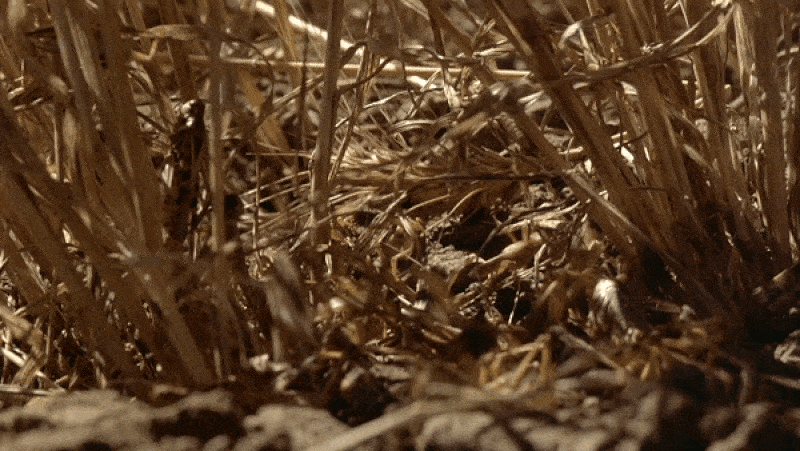
Before the two wide shots, we’re treated to several establishing closeups of real-life grasshoppers that provide essential context for the viewer. By seeing these little devils up close, we understand the stakes of the subsequent wide shots: these tiny things are hungry and there are thousands of them.
Now, some of you may be wondering: what’s the difference between a locust and a grasshopper? The simple answer is that all locusts are grasshoppers but not all grasshoppers are locusts. The best way to tell them apart is not by their appearance but by their behavior. Grasshoppers are solitary while locusts experience a rapid onset of socialization known as a swarming phase. And a swarming phase is precisely what’s being depicted in Days of Heaven.
In these shots leading up to the climactic, peanut-powered panorama, we’re treated to a whack of shots that feature live grasshoppers. According to an interview with Almendros in the June 1979 issue of American Cinematographer, the grasshoppers were supplied by the Canadian Department of Agriculture. But, as art director Jack Fisk and editor Billy Weber tell it on their Criterion commentary track, this task was actually conducted by boy scouts who collected the grasshoppers in the most whimsical way possible.”They’d ride on the front of a jeep with a big net through a field and catch thousands of them.” Wherever they were sourced, according to Clenton Owensby, a technical advisor on the film, more than five-thousand live grasshoppers were used in the sequence.
Several of the extreme closeups of the grasshoppers were shot across the border in Montana. Some of the insects were glued to the wheat to achieve these shots. How did the animal rights people let them get away with this? The answer, per the commentary, is that “they weren’t around.” So thanks, the ’70s.
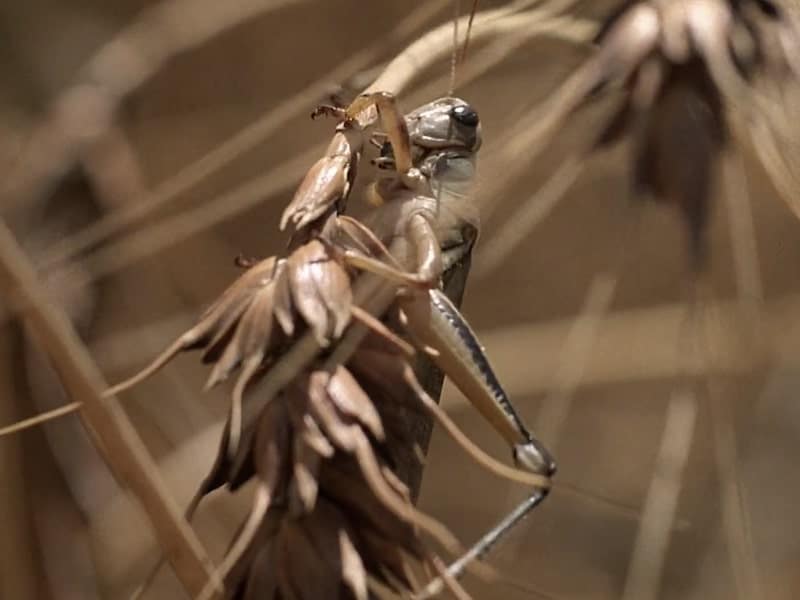
What’s the precedent?
There are a couple of things to talk about here. And the first is laws concerning animals in film media. That’s right, we’re not done talking about the glued grasshoppers. But, look, I was curious. Because when you think about famous cases of animal cruelty in film, you rarely think of insects.
Filmmakers have largely managed to pivot to CGI for their narratively-required bug shenanigans. But the same cannot be said of television, specifically reality programming. So what laws protect insects? Humane Hollywood’s guidelines are very thorough. And they describe, in detail, what’s expected of productions to ensure the safety of on-set insects. Heck, insects even have their own chapter (which they share with arachnids). It includes stipulations like “don’t use smoke machines” and “don’t hurt them.” You know, the basics!
The American Humane Film and Television Unit began its work in 1940 and was one of the few good things to come out of the Hays Office. However, they didn’t start to monitor the filming of animals in unionized American productions until the late ’80s thanks to the infamous animal abuse in Michael Cimino’s Heaven’s Gate. So that’s (at least partially) why no animal rights folks were present for the grasshopper glue-ing.
In the aforementioned American Cinematographer article, Almendros cites the 1937 rags to riches film The Good Earth as a direct inspiration for the locust effect. In the final act of that film, a swarm of locusts threatens to destroy the village’s crops. While the techniques used on Days of Heaven are different, the lineage, both emotionally and visually, is clear.
The sequence was supposedly conceived by the MGM effects legend Arnold Gillespie and was executed by James Basevi, Dave Friedman, and James Curtis Havens, all of whom went uncredited. Some of the backgrounds for the sequence were shot in Utah during an actual locust infestation. Supposedly, the swarm effect was achieved by filming coffee grounds swirled in a glass tank.
A New York Times article from 1937 also suggests that the shots of dead locusts were bulked up with coffee grounds. I suspect, given the coarser grain of a lot of these SFX shots, that optical mattes were used to combine process shots and the photographic effects with the footage of the actors defending themselves from the swarm.
Gosh, peanuts…coffee. Is anyone else hungry?
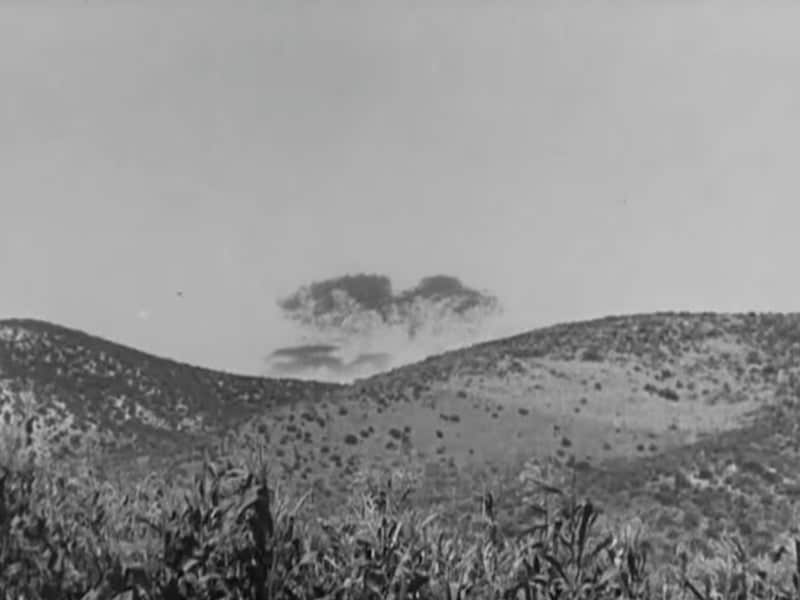
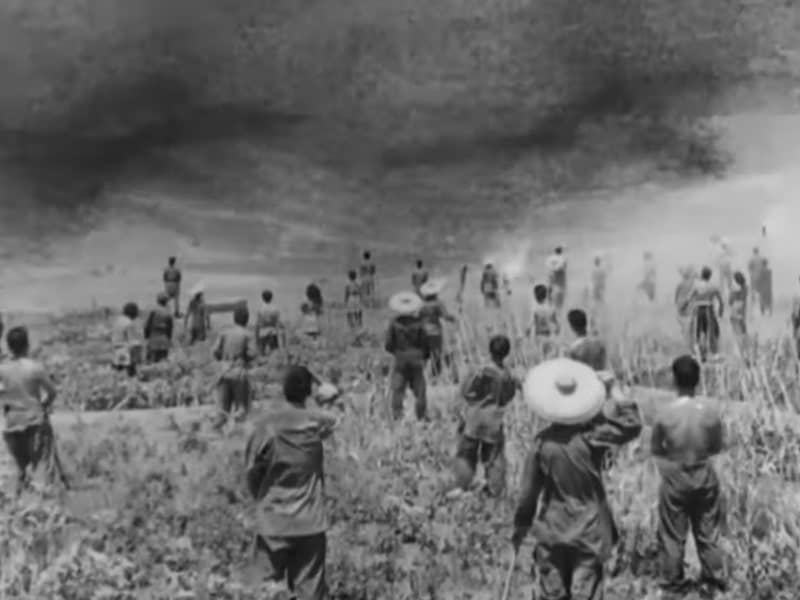
0 comments:
Post a Comment